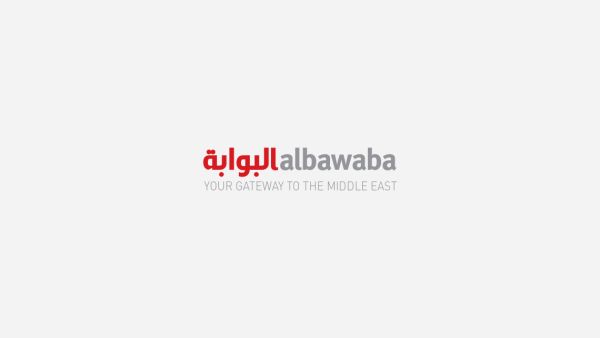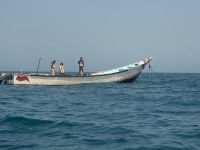The Lebanese economy that is emerging nearly a decade after the end of the Civil War is characterized by competition, open-market commercial orientation and the region's most liberal banking program.
Still, Lebanon is picking up the pieces of its battered economy. The delicate internal and external predicaments in which the country is caught impose constraints on both the political and economic environments.
Externally, the primary factor is Syria, the country's true power that has stationed troops inside Lebanon since 1989. On another front is Israel, which has maintained a “security zone” in southern Lebanon to combat threats to its northern border. Israel demonstrated its ability to affect Lebanon's economy when it launched its strongest attack in years against the nascent infrastructure in June 1999, destroying highways, bridges and badly damaging Beirut's power stations.
Internally, the country's policies are affected by political struggles between various religious groups, each of which holds powerful constitutionally guaranteed positions within the political system. This internal dynamic came to a head in 1998 when a power struggle between Prime Minister Hariri and the newly elected President and former army chief of staff, Emile Lahoud, led to Hariri's resignation.
Hariri's departure brought to a close the opening chapter in the country's economic comeback. During his tenure, which lasted from 1992 to 1998, the economic goal was to rebuild the country's infrastructure as quickly as possible, regardless of the accrued costs. Hariri, a billionaire construction tycoon, was viewed as the right man for this job because of his international stature and close relationship with Gulf countries, which allowed him to secure loans from the oil-rich region. He is credited with stabilizing Lebanon's currency, which was in the process of collapsing before he took office. Also under his term, the Lebanese lira rose in value against the dollar, and Lebanon received its first long-term foreign debt rating from S&P, Moody's and others.
On the down side, Hariri's rebuilding policies led to massive budget deficits and borrowing. The ratio of public debt to GDP, which in 1993 was 50 percent, grew to 113 percent in 1998. It was estimated at 130 percent by the end of 1999. The weight of debt, which ballooned to $22 by the end of 1999, and budget deficits, began to wear down the economy. Growth slowed to an annual average of 3 percent from 1995 to 1998 versus its peak of 8 percent in 1994. By 1999, it had regressed to less than 1 percent. The large-scale government borrowing also crowded out private-sector borrowing and pushed up interest rates, making it difficult for private capital investments.
In the relatively calm year of 1991, industrial production, agricultural output and exports showed substantial gains. Further rebuilding of the war-ravaged country was delayed in 1992 because of resurgent political wrangling, but in October 1992, al-Hariri was appointed Prime Minister, and under his leadership, Lebanon embarked on the road to economic recovery. Efforts centered on currency stabilization, budget deficit reduction, an ambitious reconstruction program, attracting foreign aid and investment and regaining Lebanon’s role as the banking, trading and entertainment center of the Middle East.
The recovery program led by former Prime Minister Hariri was aimed at constructing a modern, competitive economy that would take advantage of Lebanon’s educated and entrepreneurial population. Al-Hariri has developed a two-stage development program, known as Horizon 2000 (the original target date), comprising a short-term emergency reconstruction phase (1993-1995) and a medium-term recovery phase (1996-2003). The program’s estimated cost is US$ 11.67 billion, and it boasts the ambitious goal of doubling per capita GDP by the end of the period. Infrastructure projects in the program included the construction and repair of electricity stations, the country’s telecommunications network and water and sewerage facilities.
The implementation of al-Hariri's plan has suffered several setbacks. In April 1996, for example, clashes between Israel and the Shi’ite guerrilla movement, Hizballah, severely damaged homes, businesses and infrastructure, costing the economy an estimated US$ 400 million.
Hariri's successor is Selim al-Hoss, a former Prime Minister who served at different times during the Civil War. Hoss, who possesses a doctorate in economics, aims to usher in the country's new economic phase – that of structuring the economy around the private sector as the main driver of growth.
Lebanon's public finances, its yawning trade deficit, and its high rates of unemployment (up to 20 percent of the work force) and underemployment are not encouraging. In addition, an influx of Syrian labor has increased unemployment and placed a heavy burden on Lebanon’s social security system. As a result of this influx, Lebanon is transferring at least US$ 2 billion a year to Syria.
It must be recalled, however, that while Lebanon remains a tiny economy, much of the trade imbalance is caused by imports of machinery. Capital is flowing in from expatriate Lebanese and other Arabs (albeit mostly for speculative property deals), and gold reserves are ample. As long as stability lasts and the economy remains on course, the horizon appears reasonably promising.
Premier Hoss faces a large task in front of him. His government aspires to replace the public sector with the private as the main engine of growth. He is seeking to reduce public debt to 85 percent of GDP by 2003. The 1999-2000 budget forecasts $3.31 billion in revenues and $5.54 billion in spending, creating a deficit of 40 percent, or 13 percent of GDP.
In order to generate additional revenue and to reduce the deficit, the government is raising corporate taxes from 10 percent to 15 percent, doubling the bracket of personal income tax to 20 percent and adding $0.066 per liter of gas, in addition to other hikes. These measures were expected to raise roughly $400 million in extra revenue. But some of these hikes may be offset by other developments. For instance, the gas increase was consumed primarily by a 70 percent rise in world oil prices and is not expected to yield the projected revenue.
Furthermore, Lebanon is receiving economic resources from elsewhere. The World Bank announced in February 1999 that it would extend $600 million more for reconstruction and budgetary support measures. This matches an initial $600 million offered in 1993. The country is also receiving money from the Gulf as well as repatriation of between $6 billion and $7 billion a year by Lebanese living abroad. This money is sufficient to cover the country’s trade deficit, which has dropped to its lowest level since 1993. A gradual rise in exports and drastic fall in imports have combined to reduce the country's trade deficit to $5.05 billion for the first 11 months of 1999. During this period, total exports rose by 6 percent to $630 million, up from $594 million in the corresponding period of 1998, and total imports fell by 13.7 percent to a record 5-year low of $5.7 billion.
During the first 11 months of 1999, Lebanon's fuel bill rose to $443 million, compared to $416 for the entire year of 1998. Precious metals and jewelry, worth $86 million, maintained its position atop the country's export list, comprising 13.7 percent of total exports. Chemicals, valued at $75 million (11.9 percent) placed second. In third place were metals, which amounted to $71 million, or 11.3 percent of the total. The leading imports were machinery and mechanical appliances worth $837 million, 14.7 percent of the total. Vehicles worth $561 million and mineral products valued at $551 million followed in importance.
A successful $540 million Eurobond issued in February 1999 attracted roughly $200 million more than the government expected. Lebanon issued Eurobonds worth a total of $1.2 billion in 1999. Despite their popularity and parliament's authorization for a $2 billion borrowing program, Lebanon's Finance Minister is opposed to issuing more Eurobonds, so as not to further exacerbate the debt situation.
While the end of the Civil War and greater stability spurred economic growth, the economy began a relative slowdown beginning in 1996 that continued through 1999. The real annual growth rate, which peaked at 8 percent growth in 1994, declined from 3.5 percent in 1997 to less than 1 percent in 1999. Forecasts for 2000 set GDP growth at 1.8 percent.
In 1999, the government designed a five-year plan for economic reform in an attempt to alleviate the economic problems facing the country. The core elements of the plan are privatization, tax system reform, and restructuring Lebanon’s debt. The scheme aims to reduce the budget deficit to 5 percent of GDP from the current level of 15 percent by 2003. This plan will supplement an administrative reform program aimed to eliminate the bureaucratic corruption that many believe is the root of the country’s economic tribulations.
Economic Indicators
1999 1998
GDP Growth (percent) 0.8 3.0
External Debt (US$ billions) 5.5
(as of October 1999) 4.18
Public Debt (US$ billion) 20
Budget Deficit (percent of expenditure) 42.5 43.8
Imports (US$ billion) 5.2 (YTY to October 1999) 5.9 (YTY to October 1998)
Exports (US$ million) 563 (YTY to October 1999) 537 (YTY to October 1998)
Balance of Payment (US$ million) 32
(as of April 1999) -487.6
Total Bank Assets (L£)
Foreign Exchange Net Reserves (US$ billion) 4.4 (as of October 1999) 3.7 (as of October 1998)
Foreign Exchange Gross Reserves (US$ billion) 7.6 6.4
Beirut Stock Exchange Market Capitalization (US$ billion) - 2.4
Beirut Stock Exchange - Average daily traded volume ($ million) 0.2 (as of November 1999) 1.37
Inflation (percent) 1.0 4.0
Main Economic Domains
Telecommunications
This is one sector in which the Lebanese are quickly catching up to the rest of the world. In 1998, the size of this market was estimated at around $4 billion and contracts for landlines and mobile phones are plentiful.
The inadequate and unreliable infrastructure led to tremendous demand for mobile services. As late as 1996, nearly 15 out of every 1,000 Lebanese had phone lines. There were no public phone lines and 200,000 people used mobile phones. Today, 580,000 citizens, roughly 15 percent of the population have mobile phones and talk for an average of 750 minutes a month, amounting to 620 minutes longer than the global average.
Contracts have been signed with Ericsson, Siemens and Alcatel for the supply and installation of digital exchanges. These agreements consist of installing 972,000 new lines throughout Lebanon at a cost of $80 million. A further 250,000 lines were awarded for the provision of the local network in suburban and rural areas. The Ministry of Post and Telecommunications targets a penetration ratio of 35 percent by the end of 2000.
Internet and e-mail services are available and quite reliable. Lebanon's two Intersat and two Arabsat earth stations are undergoing rehabilitation and upgrade works.
Industry
The main industries in Lebanon are food processing, textiles, cement, chemicals, oil refining, furniture, jewelry and some metal work. Virtually all industry is privately owned and much of the manufacturing capacity is located in East Beirut.
Before Lebanon’s industrial sector can realize its true potential the government must develop a clear and integrated policy, including regulatory and customs reforms. Without these reforms there is little chance that industry can contribute much to private-sector growth and, thus, overall GDP growth.
The country has taken steps in this direction with plans to build industrial parks, reduce customs duties charged on some imported raw materials and the decision to pay a 5 percent interest rate subsidy on loans to industry.
The industrial sector is still trying to recover from the impact of the fifteen-year Civil War. The lack of adequate infrastructure, rising costs of services and scarce bank credits are slowing recovery, although imports of industrial machinery have started to pick up.
Agriculture
Agriculture accounts for about one-third of GDP. Thirty percent of total land is cultivated arable or utilized forest. The most fertile areas are located along the coastal strip and in the Beka’a valley. The main crops are wheat, barley, corn, vegetables, potatoes, citrus fruit, hemp (hashish), olives and tobacco. The primary livestock are sheep and goats.
The agricultural sector suffers from labor shortages, lack of banking facilities and rising costs of services. The government subsidizes sugar beets, wheat and tobacco and has succeeded in reducing the lucrative but illegal drug production in West Beka’a and Ba’albek - Hirmil. Several multinational donors are financing agricultural and livestock projects.
Construction and Real Estate
1999 was a disappointing year for contractors. Few projects were initiated and a number that were scheduled never began. The bottleneck has been the government's continued attempts to redraft the scope and activities of the public bodies charged with carrying out the reconstruction program, primarily the Council for Development & Reconstruction and the Investment Development Authority of Lebanon.
A $550 million project to develop the coast between Beirut and Antelias was postponed in April after investors feared the risks were too great. Another project to build 10,000 housing units has been postponed and a design-build-operate-transfer free trade zone and industrial zone at Quleaat has also been delayed.
This construction downturn is in contrast to the early 1990s when the sector performed well, particularly between 1993-1995. During those years, both engineering construction permits and cement deliveries rose dramatically despite a moderate rate of construction.
Tourism
Lebanon was a major tourist center prior to the outbreak of the Civil War, and its scenic beauty, sunny climate and historic sites attracted some two million visitors annually. In 1974, tourism contributed about 20 percent of the country’s income.
Today, $500 million is being injected into the hotel industry to return and restore Beirut's famed hotels to their former glory. There is also significant construction of new hotels, with a goal of creating 18,000 rooms by the end of 2002. Continued stability has convinced many internationally famous hotels, restaurants and clothing stores to reopen in Beirut, including the Marriott, the Intercontinental Vendome, Hard Rock Cafe, Henry J. Benas, Pizza Hut, Hardee's, Kentucky Fried Chicken and Baskin Robbins. The famous Casino Du Liban reopened in 1996.
There are currently nearly 400 hotels in Lebanon, most of them are in the Beirut area. The Ministry of Tourism estimates that there are some 3,000 restaurants, nightclubs, and cafes in Lebanon, compared to a pre-war figure of more than 5,000. There are about 650 travel agencies.
With the quieting of the political situation, the private Arab business sector has begun to show renewed interest in investing in Lebanon. Thus, in discussions with the government, Lebanese entrepreneurs now occasionally raise the possibility of improving infrastructure facilities and access roads to tourist sites in the country. During 1993-1995, a number of requests were presented for the speedy repair of the Tyre-Sidon road, which bears a heavy traffic load during the summer months, despite having been severely damaged during the Civil War. Other tourist sites in Lebanon where road infrastructure is inadequate are located in the Ba’albek, Kar’oon Lake, ‘Anjar and Byblos areas.
Public Finance
As noted, the government’s budget deficit remains one of Lebanon’s most important and pressing economic problems. The budget has been in chronic deficit throughout the last decade as the government continued to pay its employees and to supply goods despite its inability to collect sufficient revenues. Borrowing from the banking sector has financed the deficit.
The government has taken a number of practical measures to reduce the deficit and to maintain a stable budget since 1992. These include the regulation of public expenditure and various steps to increase internal revenues.
The huge structural imbalance in Lebanon’s trade has also restricted growth. The manufacturing sector is not sufficiently developed to provide an alternative to imported consumer goods or production input. The result is that economic activity remains almost entirely dependent on imports.
1993 - 2003 Budgetary Allocations
Transportation US$ 2,969 billion
Water Supply US$ 930.0 million
Electricity US$ 1,645 billion
Government Buildings US$ 270.0 million
Education US$ 1,530 billion
Solid Waste US$ 180.0 million
Housing and Resettlement US$ 1,050 billion
Tourism US$ 188.7 million
Telecommunications US$ 715.0 million
Social Affairs US$ 130.0 million
Agriculture and Irrigation US$ 650.0 million
Management and Implementation US$ 150.2 million
Public Health US$ 500.3 million
Private Sector Services US$ 100.6 million
Wastewater Treatment US$ 500.3 million
Information US$ 50.0 million
Industry US$ 394.9 million
Environment US$ 35.0 million
© 2000 Mena Report (www.menareport.com)







